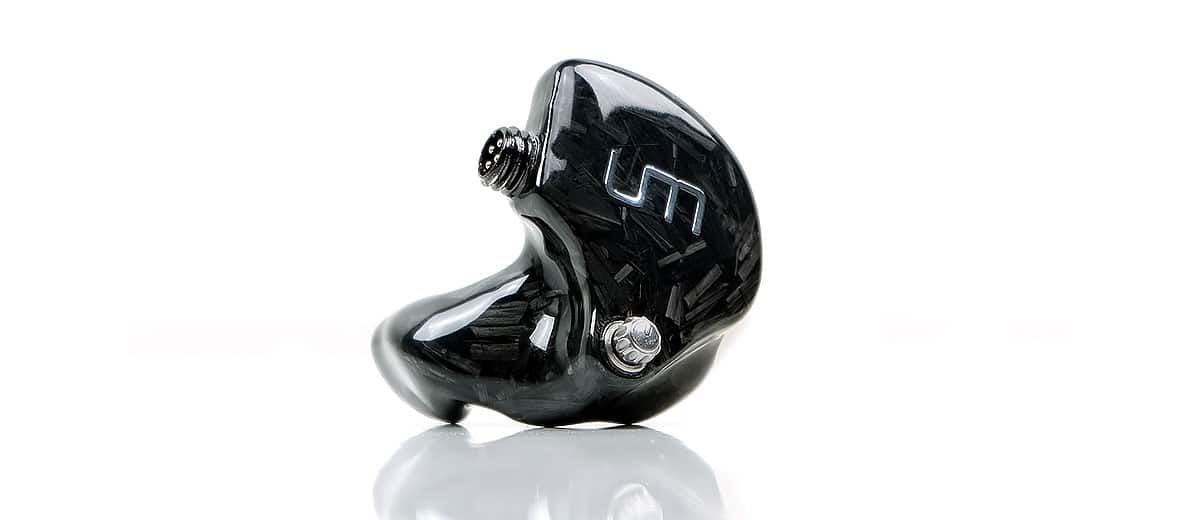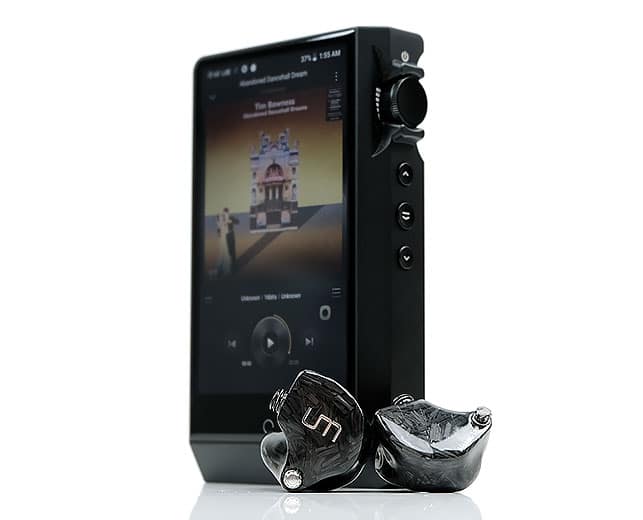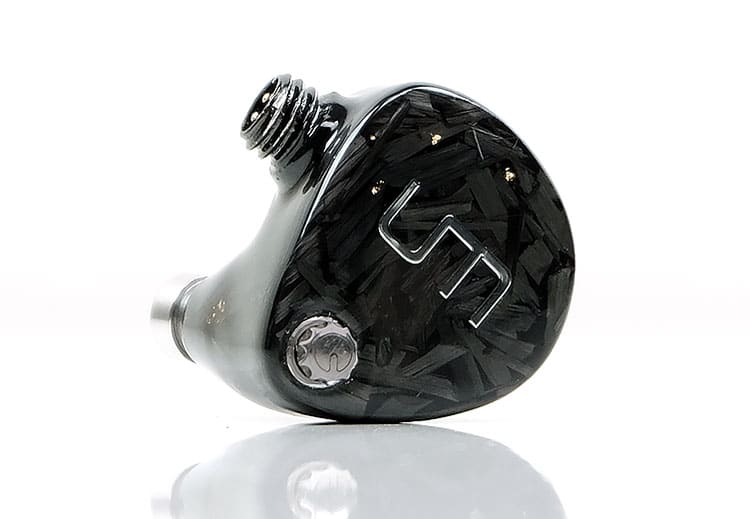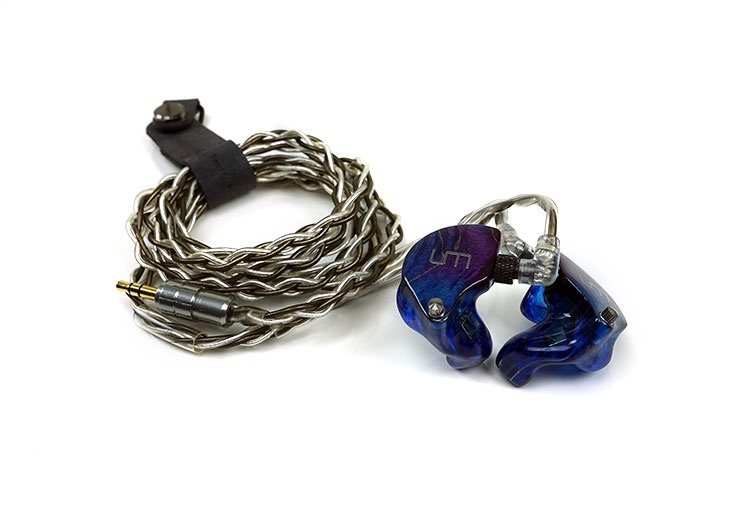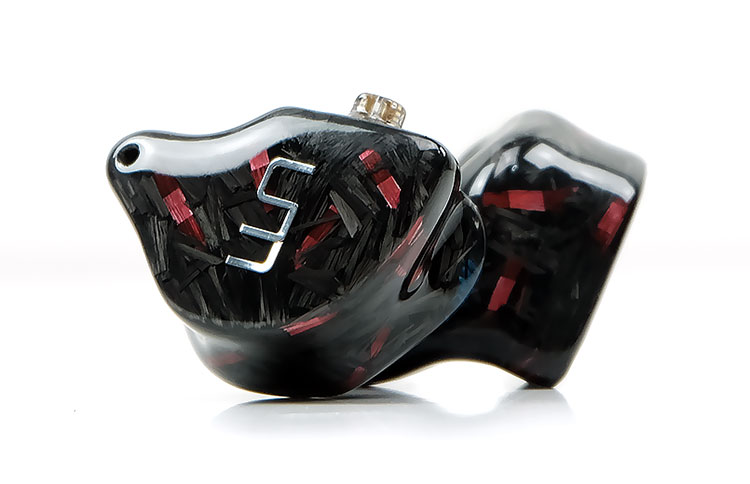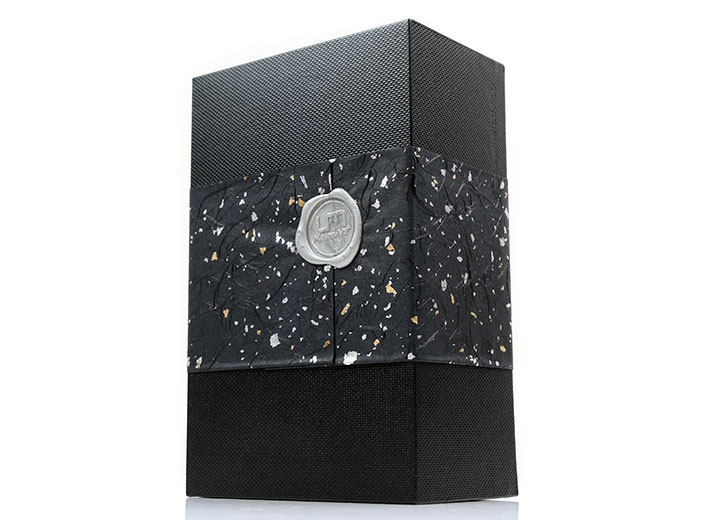Sound Impressions
Dual-Tone Copper
The Mason V3+’s presentation is warm-to-natural, rich, and spacious sounding. Comprised of an all-BA design it has got a decidedly BA timbre on the low-end where sub-bass impact is a shade faded but it compensates with a voluptuous mid-bass rise and a slow steady drop into the lower-mids that allows that warmth to run with it.
Instrumental notes are thus dense and solid sounding and not as thinned out as on the previous V3 tuning. Not that the V3 was particularly lean but the new tuning has more body and rounded feel with a smooth attack and slightly more decay across the mids.
Vocals have a relaxed feel to them and for me, quite sibilant free with more of a euphonic tone in keeping with that general warm to natural signature. What is slightly missing is a little bit of upper-mids contrast that tends to mute some of the vocal presence, particularly below 1K where the lower-mids are normally a shade lower in dB elevation.
Somewhere around 3-5k, there is a dip and that dip sucks a little air out for me and gives the Mason V3+ that rounded overtone with the copper side. You only really notice this more for rock standards than EDM which it seems perfectly balanced for.
The Mason V3+ is thus a little more relaxed for me than the original using the copper side of the dual-tone. Combine that with the denser low-end plus that little upper-mids dip I found myself nudging PMEQ by 2-3dB on that 3-5k to produce a shade more percussion presence and bass/treble contrast.
Once done it sounded very balanced indeed and well ahead of the V3 in terms of coherence.
Dual-Tone Silver
This is more like it. The silver side does not radically alter the Mason V3+ sound but rather tweaks the low-end and mids clarity more towards my own personal preference. You also get a bit more treble presence but not enough to upset the generally coherent and balanced sound.
The low-end drops a shade in terms of volume and separation improves as the bass tightens up a little. The silver side note decay is shorter compared to the copper allowing the Mason V3+ to produce a slightly more articulate lower-treble presentation. It also delivers on a superior perception of space for vocals to breathe sounding less rounded than the copper signature.
Clarity and a good harmonic balance are important to me for vocals and the silver side of the dual-tone does it better than the copper side. It does not mess around with vocal positioning but it does sound the more accurate of the two cables.
From the top-down, the treble also takes on a bit more presence and clarity which seeps down into percussion timbre. With the better level of bass/contrast, the Mason V3+ silver side percussion has a bit more sparkle about it and I think it helps give it some needed excitement. You do not really notice that tiny upper-mids dip as much, particularly if you are using a neutral source.
This is also the side of the cable I would crank up the DB-GO on, something I was more cautious in doing on the copper side. That being said, I found myself going for DB-GO tweaking with synth music and EDM where male vocals would not get drowned out by the elevated mid-bass energy.
Staging Differences
Each side of the cable is going to offer a slightly different staging perception. The copper is relatively deep, planted, and powerful sounding overall but it has less headroom with more treble attenuation and a languid midrange presence that does not quite grab you where it needs to.
You will find your ear drawn more to the bass and lower-pitching instrumental notes which are more forward sounding. Vocal positioning on the copper side is relaxed with male vocals a bit further back sub-1k.
The silver cable does not mess with the staging depth which is good for a BA but not MEST deep (see below). Instead, it tightens it up and brings in a little more space and enhanced articulation in general. You get a better sense of instrumental positioning because of the enhanced treble presence and contrast in the instrumental timbre. Imaging cues are a little easier to pick out as a result.
Synergy
Efficiency
Starting with a quick opinion on efficiency. I never found the original Mason V3 to be that sensitive compared to the liked of Solaris and Andromeda and you can expect to find almost the same setup with the V3+.
Yes, the numbers below suggest the Mason V3+ is slightly sensitive 19.6Ω at 107dB SPL. However, in real-world testing, I found it to deal with high noise floors fairly well. You need a bit more juice than normal to drive the V3+ but it is generally more efficient than hybrid electrostatic monitors currently out on the market today.
You get an almost perfect noise-free performance from the FiiO M11 and more so with the M15 with hiss being very low indeed on the Hifiman DAP.
Neutral Pairings
Some of this personal preference because I have a preference to PMEQ the 4-6k range up a bit more on the Mason V3+ but at times, depending on the source, I do not feel I need to. 100% clean sounding sources match the Mason V3+ very well indeed offering a lot of airiness up top that suits the Mason V3+ relaxed treble sound.
Neutral to clean DAPs such as the FiiO M15, iBasso DX220/AMP1 MKII, and the Lotoo PAW Gold Touch sound excellent with the Mason V3+. They inject some welcome energy in the upper mids and treble that help balance out the additional warmth and low-end quantity on the new V3+ tuning.
Of the two lower-end DAPs, the DX220/AMP 1 MKII has the better low-end response and PRaT and generally the livelier signature with the Mason V3+. The M15 was much more controlled on the low-end with less ‘PRaT’ but with a bit more treble presence shining through on the Mason V3+.
Natural Pairings
If you want something a bit less reference, more natural sounding with a better vocal presence on the Mason V3+ then the R2R2000 from Hifiman will pair quite nicely. It is a bit smoother than either of the two neutral DAPs but still manages to deliver a hugely detailed and airy sound with excellent headroom.
I also prefer the vocal harmonic balance with the R2R2000 pairing over the neutral M15’s reference sound. The Mason V3+ needs plenty of life in those upper mids to sound at its best and the R2R2000 will deliver on that.
With the Cayin N6ii, this depends on what card you decide to use with it. I felt the Class A of the E01 motherboard just too soft and lacking in impact with the low-end warmth of the Mason V3+.
The Class AB of the E01 did much better tightening up into the mids but given the Mason V3+’s lower levels of sensitivity, it will pair better with the more powerful E02. I still think the top-end is marginally on the forgiven side but small doses or PMEQ will sort that out.
What you get with this combination is fantastic separation and width to go with the already powerful low-end. It can sound delightfully malevolent at times.
Select Comparisons
Unique Melody Mentor V3+
$2599
Technical
UM released the Mentor V3+ at the same time as the Mason and it is the successor to the Mentor V3 released back in 2017. The price is somewhat lower though it does have a lower driver count and would be the next row back from the Mason flagship line.
The Mentor V3+ is a 12-driver configuration as opposed to 16 drivers inside the Mason V3+. It has a configuration of 4 for the lows, 2 for the lower-mids, 2 for the upper-mids, and four for the highs. The Mason V3+ adds an additional 4 drivers to the midrange with 4 for the lower-mids and 4 for the upper-mids. Both use a 4-way crossover system.
The Mason V3+ I have here is a custom design so it is bigger than the universal Mentor V3+ we reviewed earlier in the year but the seal is 100%. The Mentor V3+ sample also has a longer nozzle and is tip dependent. However, both share a lot of similar tech with DB-GO modules, that tasty looking carbon fiber Dreamweaver shells and the dual-tone cable.
Performance
The Mason V3+ has a similar impedance at 19.6Ω compared to the Mentor’s 18.9Ω. However, the sensitivity levels between these two have a bigger gap at 107dB for the Mason V3+ and 113dB for the Mentor V3+. I can only presume the Mason V3+ has some less efficient BA drivers in there somewhere.
What that does mean is that the Mason V3+ requires a bit more current for volume levels over the Mentor V3+ but otherwise, both should be comfortable enough on most DAPs. Personally, I would pick a clean neutral DAP for the Mason V3+ fulsome sound and a DAP with good dynamic range for the Mason V3+’s lively signature.
Tuning
The Mentor V3+ is quite the contrasting presentation to the Mason V3+ and honestly, you should not have any issues deciding which one suits your preferences best.
The Mentor V3+ is a lively affair with a slight v-shaped tuning favoring snappy lows and sparkling highs over the mids but not hugely so. There is a bit of mids lift for vocals.
The Mason V3+ is more relaxed but thicker sounding with more mid-bass warmth. You will perceive more body and a richer timbre on the Mason V3+ but also you will get a little less treble energy and presence. Both offer a BA type timbre but it is just the differing emphasis that is critical.
In terms of staging, both have the same low-end extension but the Mason V3+ sounds fuller whereas the Mentor V3+ bass is more forward, aggressive, and intimate. The Mason V3+ is less dipped in the lower-mids but not as forward for vocals. The Mentor V3+ has more treble extension and forwardness so it is airier and that helps vocals to breathe.
Also, that V3+ treble presence delivers a bit more odd-harmonic presence so it is not as euphonic or thick sounding through the mids as the Mason V3+. I would pick the Mentor V3+ if you wanted more sparkle and extension beyond 7k. Pick the Mason V3+ if you want more instrumental smoothness and lower-mids presence as well as sub-bass girth over mid-bass punch.
Unique Melody Mason V3
$2099
Technical
The Mason V3 is the precursor to the V3+ and really sounds quite different even though they share much of the same technology and configuration. That 2017 price also stands out like a sore thumb as being significantly cheaper than the new V3+ price.
The configuration is much the same with the original V3 also using a 4-way, 5-bore design with 4 sound tubes and 1 bore designed for their new DB-GO tuning module. The BA groupings are 4 for the Lows, 4 Lower Midrange, 4 Upper Midrange, and 4 for the highs.
The internal tubing on the Mason V3+ has changed, however. It is now made of titanium-gold that is corrosion resistant. Also, the internal wiring has been upgraded to silver alloy from the original copper for better conductivity and lower internal resistance.
Design
The design tweaks are significant. The new V3+ carbon fiber Dreamweaver shell is stunning and should be tougher than the original blue acrylic Dreamweaver shell of the original V3.
The DB-GO module also looks a lot sturdier on the Mason V3+ with a new screw design that is bigger and grippier than before. You will find this one much easier to work with unsighted than the older V3 version which was thinner and shorter.
The new V3+ DB-GO bass module now has better damping so the weighting of bass has more control than before throughout the curve. I believe the setting might still be +/- 4dB just more consistently applied from sub-to-mid-bass for additional power.
Cable
The cable has also changed from the original with the newer V3+ getting an upgrade to that 26AWG 8-core build from the previous 4-core geometry. The newer version also has the better-barreled connectors for easier signaling which wire you are rotating on.
Both old and new cables have the same physical overtone of a darker copper and lighter silver wire mix using a PVC translucent jacket. That means 6N 4-core single crystal copper and the other is 6N 4-core silver, (combined for 8-core).
Performance
The V3 is rated at 24Ω and 104dB SPL which is only slightly less efficient to the Mason V3+ on paper. In truth, both have similar performances with the DAPs with thew V3+ only marginally more sensitive. We tested them with the Cayin N6ii/E02 pairing with both sitting comfortably at 45-50 low-gain and the FiiO M15 low-gain 55.
Neither are going to give you issues with hiss with both excellent in delivering black backgrounds on the aforementioned DAPs.
Tuning
The tuning between these are definitely heading in the same direction but there have been some noticeable tweaks meaning you can A/B them fairly easily and pick out which one is which.
The V3+ sounds the more planted of the two monitors for me with the better bass response. It has a little more sub-bass presence and mid-bass warmth as well as sounding marginally more spacious. The V3, maybe a shade more relaxed in how it delivers everything, not quite the same punch and warmth.
On the top-end, the Mason V3 is the slightly brighter of the two monitors but also the leaner of the two. The V3+ sounds firmer, with the better body but also more liquid sounding in its delivery. It does not lack from headroom but it sounds the marginally more relaxed of the two top-end performances.
Combine that with the planted low-end and slightly more warmth the V3+ mids sound far richer, more rounded, and offering the better texture and detail as a consequence. The V3 sounds lighter in the mids, not quite as much power and weighty from the low-end transmitting into instrumental timbre and impact.
The one final note is the 4-6k range. I think the V3+ is comparatively dipped in this area whereas the V3 has a bit more presence and bite. You can hear that in some percussion timbre which has a slightly leaner sharper partial overtone on the V3 whereas the V3+ is more controlled and natural sounding.
Unique Melody MEST
$1699
Technical
The MEST has just dropped into our office for review so these are early impressions and subject to change in our full review as we spend more time with it. Its pricing is a bit lower at $1699 but it also introduces some interesting new bone conduction drivers as well as more tried and tested electrostatic technology.
The configuration is therefore very different with 8 drivers of 4 different varieties as opposed to the all-BA 16 driver count in the Mason V3+. The MEST uses a bone conductor driver which sorts of adds some additional flavor to 2 BA drivers for the mids. You then get a 10mm dynamic driver for the lows, 2 BA for the highs, and a dual Sonion electrostatic pairing for the ultra-highs.
Without going into too much detail, (the main review will come soon), the bone conductor drivers will deliver signals by vibrating a specially designed faceplate that vibrates this into the main shell.
The bone conduction drivers are made by metal vibration pieces that are covered by piezoelectric ceramics. The ceramic layers will bend the metal vibration pieces to make micro-vibrations according to the changes of input alternating voltage.
Design
You can order the MEST in both custom and universal format with pricing a bit more variable for the custom version. Like the Mason V3+, however, you can avail of the new carbon fiber Dreamweaver design and for this version (custom) we opted for the black and red effect which came out rather well.
You will notice some other structural changes on the MEST. The first is the DB-Go bass enhancement module from the Mason V3+ is gone from the MEST. Instead, you have a bass venting port for the dynamic driver. That does mean the level of passive isolation is marginally reduced on the MEST compared to the Mason V3+ but only slightly so.
The other notable change is the termination connector which has reverted back to a traditional 2-pin protruding socket. That also means no dual-tone cable system with a fixed 4-core 6N SPC 26AWG.
The aesthetics and handling are consistent with the original dual-tone 4-core from the V3 so it is fairly flexible, low on microphonics with decent dynamic range but not TOTL performance.
Performance
The MEST is rated at 14Ω and 118dB SPL compared to the 19.6Ω and 107dB SPL of the Mason V3+ and in real work testing the MEST can go louder faster but the gap is very small indeed.
Both of these do require a bit more current than notoriously sensitive IEMs like the Solaris or the Zeus but the at 70 steps low-gain on the Lotoo PAW Gold Touch both sounded fairly optimal to me. On the Cayin N6ii/E02 pairing both were closer to 50 on the low-gain setting.
Noise is not a factor with either of these, even on known high noise floors like a higher gain 4.4mm balanced from the FiiO M11 or the R2R2000’s more aggressive amping stage.
Tuning
Hugely different sound signatures with the MEST subscribing more to the Mentor V3+ V-shape with an exciting high contrast sound over the voluminous but warmer sound of the Mason V3+. You will hear a lot more high energy contrasting overtones in the MEST timbre whereas the Mason V3+ is comparatively darker and smoother sounding.
On the low-end, both have excellent quantity levels but the MEST is a little more impactful below 80HZ with that dynamic driver when called on. The MEST’s low-end also has that juicy dynamic driver texture compared to the BA timbre of the Mason V3+.
By throwing the DB-GO bass module to the max I can match the MEST for quantity but it is not quite as defined or as elevated sub-80Hz. However, the MEST does not have a huge mid-bass elevation, being more L-shaped from 20Hz to 800hz. This can often leave the MEST sounding the leaner of the two if there is not a huge amount of sub-bass energy in the music.
What the Mason V3+ does differently is to extend the elevation a bit further into the mid-bass so it delivers more warmth and a richer texture into the lower-mids. Instruments sound weighted but detailed and have a smooth even-harmonic timbre. Instruments do not quite have the same body and presence on the MEST with a bias to a forward upper mids over the lower-mids.
Vocals can leap out at you on the MEST whereas the Mason V3+ vocals are more rounded and more laid back. That 4-6k dip is the Mason V3+ makes a difference on warmer DAPs but if you can equalize that via PMEQ by around 2-3dB it can sound a lot more natural sounding than the MEST’s brighter treble presence.
Our Verdict
The Mason V3+ is a very natural sounding and expansive sounding flagship monitor. Especially so with the silver side of the dual-tone cable which still manages to retain that weighted full-bodied sound of the copper but with superior separation and treble articulation.
It pairs beautifully with neutral and clean sounding DAPs or those which inject a lot of clarity, especially the mids. A good balance in the mids is essential on the V3+ to allow it to show off what it can do.
The burning question – should you upgrade from the V3 and get the V3+? I think if you feel the V3 tone was a little too light, perhaps not enough body in instrumental notes then yes, the V3+ is the much the superior tuning. If you wanted some additional richness and a refined top-end then again the V3+ will give you that also.
This is a vastly different sound signature to both the MEST and Mentor V3+ offerings. My only regret is not having the Mentor V3+ in custom format also because I suspect both it and the Mason V3+ would be the perfect custom compliment to each other with those beautiful carbon fiber designs.
Mason V3+ Technical Specifications
- Frequency response range: 20Hz-25KHz
- Sensitivity: 1KHz 107dB
- Impedance: 19.6Ω
- Driver Count: 16BA
- Crossover: 4-way crossover system
- Driver Configuration: 4 low+4 mid low+4mid high+4 high

